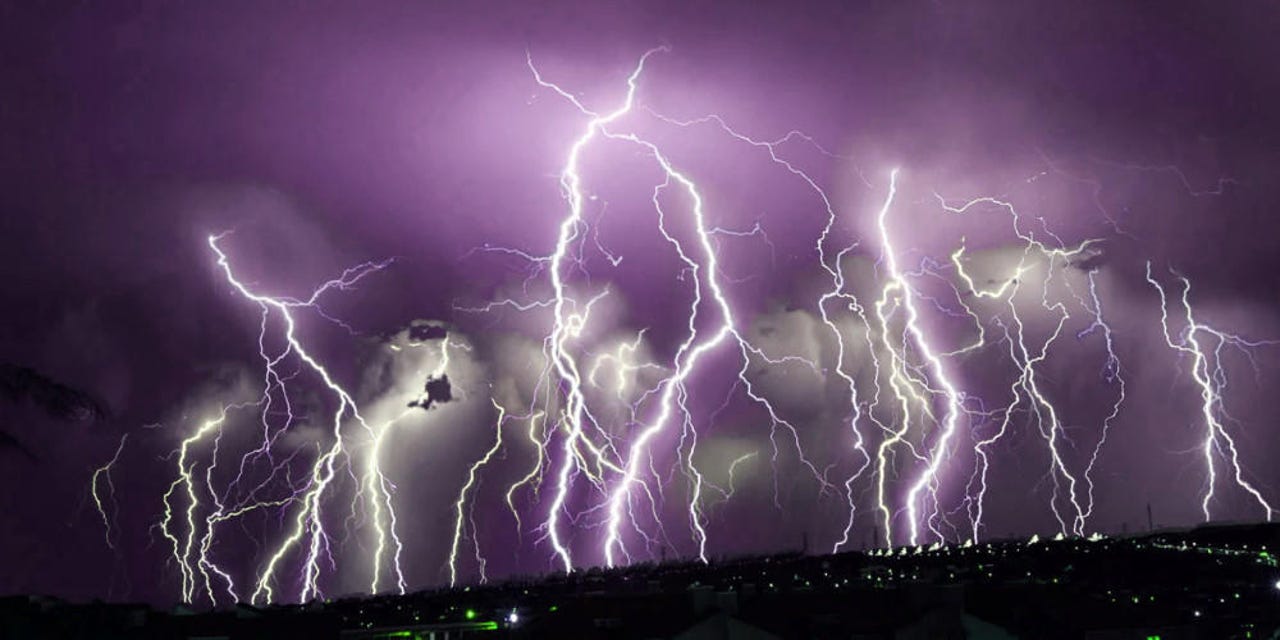NBN replaced over 21,000 FttC connection devices in six weeks to mid-November


What an NCD fears most
When summer weather begins to hit the Australian east coast, those on fibre-to-the-curb (FttC) connections need to brace for some electronics frying thanks to lightning activity.
In an update to the numbers it revealed to Senate Estimates in May, where it had replaced almost 48,000 FttC connection devices across November 2020 to March 2021, NBN said it has now replaced 99,226 NBN Co Connection Devices (NCD) from 1 December 2020 to 11 November 2021.
"Between 1 October 2021 and 11 November 2021 NBN Co has replaced a total of 21,424 devices. This includes replacements as a result of multiple severe weather events across the eastern states of Australia during October," it said.
"FttC NCDs ... can be replaced for a wide variety of reasons, including customers removing the device when they move house, new devices being automatically provided when a customer changes providers, and accidental damage in premises."
The company also said it had sought scientific advice on the lightning issue, and the NSW Blue Mountains had a higher than normal NCD failure rate.
"The Blue Mountains area has high levels of electrical storm activity and a geological make-up that can affect earthing mechanisms," it said.
By contrast, the number of full fibre network termination devices that need replacing was 5616 from the start of the year to November 11.
In the July storms that hit Victoria and forced outages on the network, NBN said there were just over 200,000 services impacted, with 39.2% on cable, a further 39.2% on fibre to the node or fibre to the basement, 13.8% were on fixed wireless, 6.2% had full fibre, and 1.7% were on fibre to the curb.
Elsewhere in its answers, NBN said it had 640,880 brownfields premises in its fibre-to-the-basement (FttB) footprint, and while full fibre was the default for new apartment blocks of more than 20 premises, FttB is sometimes deployed at a customer's request and the total figure for FttB on new builds sits under the 2% mark.
The company also said it had 83,356 Sky Muster customers, and 29.482 Sky Muster Plus customers at the end of September, with Plus customers averaging 159GB each in September, which includes uplink and downlink data.
For the year to October 31, NBN said 9.3% of all scheduled appointments were missed.
"In many of these cases, the technician turned up earlier or later than the stipulated time and still completed the job on the day. The number also includes some cases where bad weather restricted the ability to complete the job," it said.
"The number of missed appointments has decreased steadily month on month since May 21 despite adverse weather conditions in September/October, which can restrict the ability to reach site on time and complete the job."
In June, NBN called for expressions of interest from government agencies to take part in its AU$300 million regional co-investment fund.
By October 21, it had AU$29 million of proposals in progress, with 250 requests from local councils and state governments for cost estimates, and 21 projects won.
Related Coverage
- Superloop and Vodafone lagging when NBN gets busiest
- Kate McKenzie shifts to NBN chair as Switkowski departs at year end
- When NBN promo deals end, customers and telcos revert to old speeds
- Labor commits to making AU$2.4b 'investment' to extend on-demand FttN upgrades
- 5G fixed wireless is not an NBN replacement for Telstra